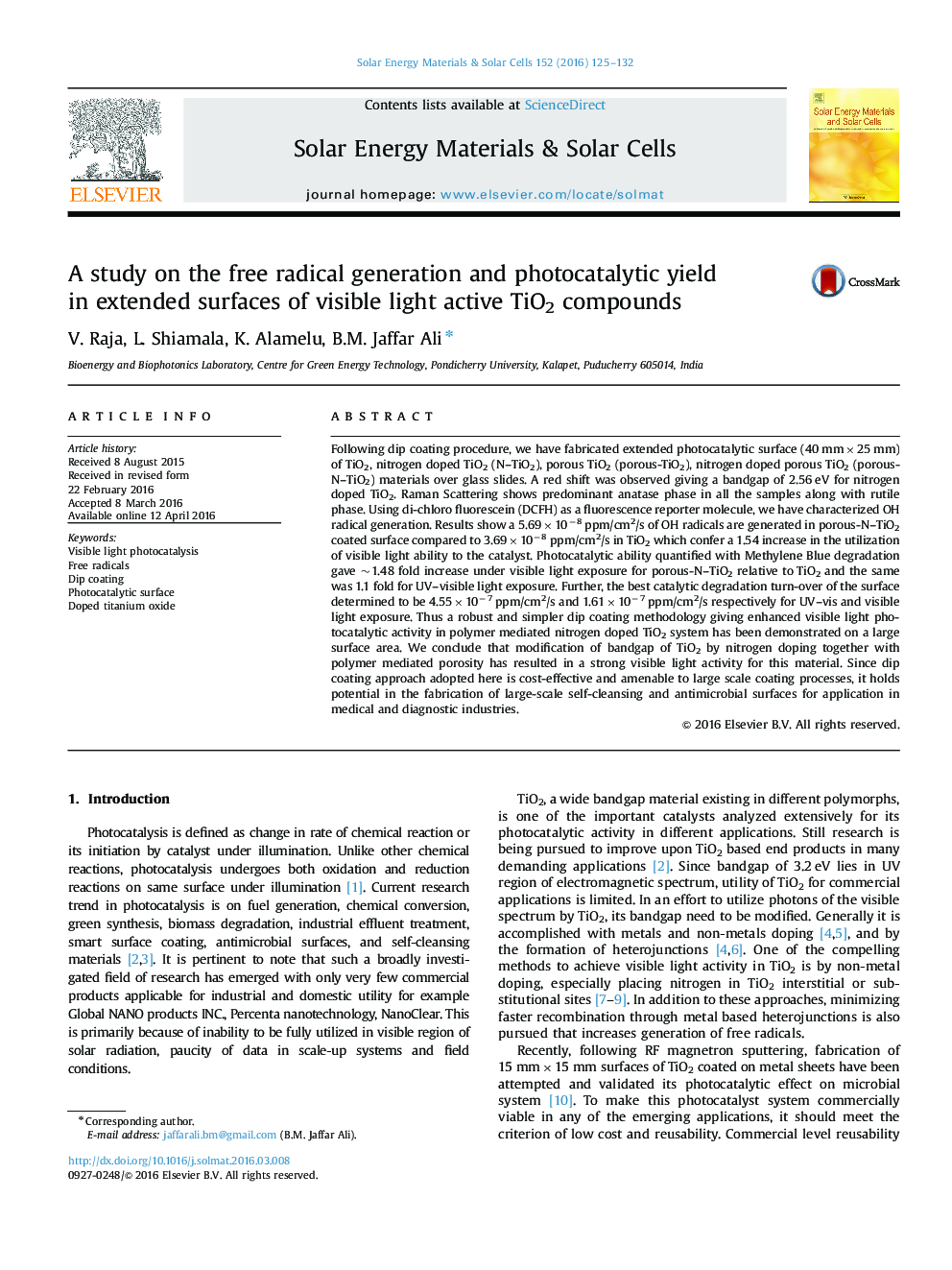| کد مقاله | کد نشریه | سال انتشار | مقاله انگلیسی | نسخه تمام متن |
|---|---|---|---|---|
| 77586 | 49287 | 2016 | 8 صفحه PDF | دانلود رایگان |

• Large photocatalytic surface has been fabricated.
• Photoactivity has been enhanced by band gap and surface modification.
• Absorption edge has been red shifted significantly giving 1.5 fold increase in visible light photocatalysis relative to UV.
• Correlated the free radical generation with the photocatalytic activity of various TiO2 surfaces.
• A proof of concept on dip coating based cost effective methodologies for surface catalysis has been demonstrated.
Following dip coating procedure, we have fabricated extended photocatalytic surface (40 mm×25 mm) of TiO2, nitrogen doped TiO2 (N–TiO2), porous TiO2 (porous-TiO2), nitrogen doped porous TiO2 (porous-N–TiO2) materials over glass slides. A red shift was observed giving a bandgap of 2.56 eV for nitrogen doped TiO2. Raman Scattering shows predominant anatase phase in all the samples along with rutile phase. Using di-chloro fluorescein (DCFH) as a fluorescence reporter molecule, we have characterized OH radical generation. Results show a 5.69×10−8 ppm/cm2/s of OH radicals are generated in porous-N–TiO2 coated surface compared to 3.69×10−8 ppm/cm2/s in TiO2 which confer a 1.54 increase in the utilization of visible light ability to the catalyst. Photocatalytic ability quantified with Methylene Blue degradation gave ~1.48 fold increase under visible light exposure for porous-N–TiO2 relative to TiO2 and the same was 1.1 fold for UV–visible light exposure. Further, the best catalytic degradation turn-over of the surface determined to be 4.55×10−7 ppm/cm2/s and 1.61×10−7 ppm/cm2/s respectively for UV–vis and visible light exposure. Thus a robust and simpler dip coating methodology giving enhanced visible light photocatalytic activity in polymer mediated nitrogen doped TiO2 system has been demonstrated on a large surface area. We conclude that modification of bandgap of TiO2 by nitrogen doping together with polymer mediated porosity has resulted in a strong visible light activity for this material. Since dip coating approach adopted here is cost-effective and amenable to large scale coating processes, it holds potential in the fabrication of large-scale self-cleansing and antimicrobial surfaces for application in medical and diagnostic industries.
Figure optionsDownload as PowerPoint slide
Journal: Solar Energy Materials and Solar Cells - Volume 152, August 2016, Pages 125–132